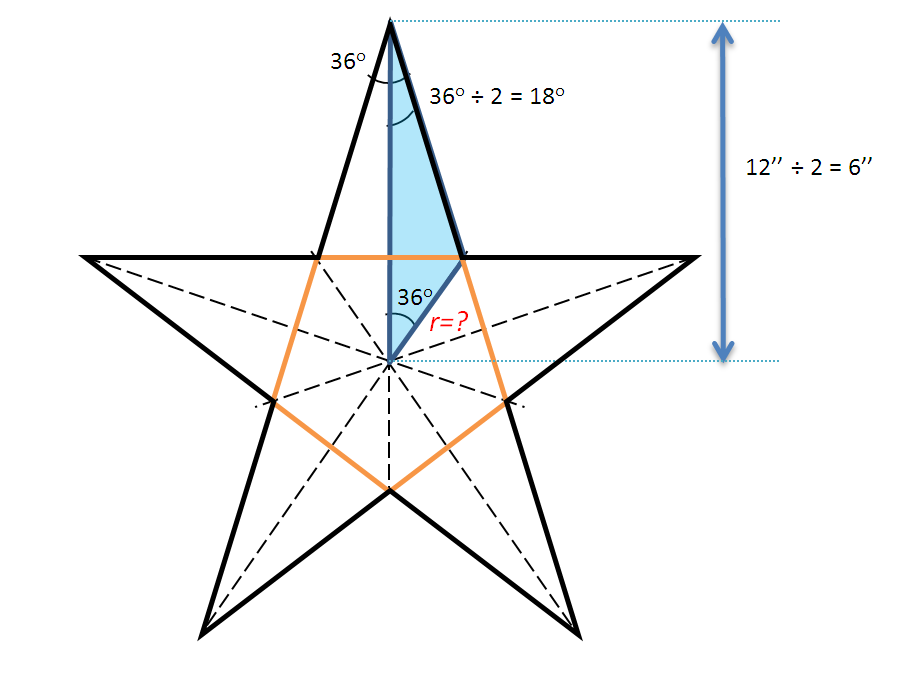Captain America's Shield
The front face of Captain America's shield (refer to this image drawn to scale) is made up of 4 circles and a 5-pointed regular star polygon which are all concentric . The 5-pointed star is tangential to the smallest circle at the 5 points seen in the figure. The diameters of the 4 circles are 30, 23, 18 and 12 inches respectively (yes, those are the real dimensions) . Calculate the ratio .
This section requires Javascript.
You are seeing this because something didn't load right. We suggest you, (a) try
refreshing the page, (b) enabling javascript if it is disabled on your browser and,
finally, (c)
loading the
non-javascript version of this page
. We're sorry about the hassle.
The areas of the circles (in descending order of area in square inches) are 2 2 5 π , 1 3 2 . 2 5 π , 8 1 π and 3 6 π respectively, hence the areas of the annuli (in descending order of area) are 9 2 . 7 5 π , 5 1 . 2 5 π and 4 5 π respectively.
The areas of the smallest circle and the inscribed 5-pointed star however requires further work. 5-pointed stars are extended from a regular pentagon, and are most easily calculated as the area of 10 smaller triangles (in blue). The longest edge length of the blue triangle will then be half of the diameter of the smallest circle the star is inscribed in. The angles in the blue triangle can also be determined by properties of
regular polygons
:
5-pointed stars are extended from a regular pentagon, and are most easily calculated as the area of 10 smaller triangles (in blue). The longest edge length of the blue triangle will then be half of the diameter of the smallest circle the star is inscribed in. The angles in the blue triangle can also be determined by properties of
regular polygons
:
The angle subtended at the center of the pentagon by one of its sides = 72°, thus the angle at the bottom of the highlighted blue triangle is half of that i.e. 36°
The angle at each point of a 5-sided regular star is 36°, hence the angle at the top of the highlighted blue triangle is half of that i.e. 18°
Then by using sine rule : sin ( 1 8 ° ) r = sin ( 1 8 0 ° − 3 6 ° − 1 8 ° ) 6 which gives r = 2 . 2 9 2 in.
Thus the area of one blue triangle, via sine rule , is: 2 1 ( 2 . 2 9 2 ) ( 6 ) sin ( 3 6 ° ) = 4 . 0 4 2 and therefore the area of the star is 40.42 sq in., and hence the area of the blue region is 3 6 π − 4 0 . 4 2 sq in.
Thus the required ratio of areas will be 5 1 . 2 5 π + 4 0 . 4 2 9 2 . 7 5 π + 4 5 π + 3 6 π − 4 0 . 4 2 = 2 . 5 .